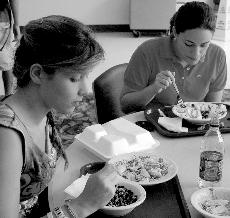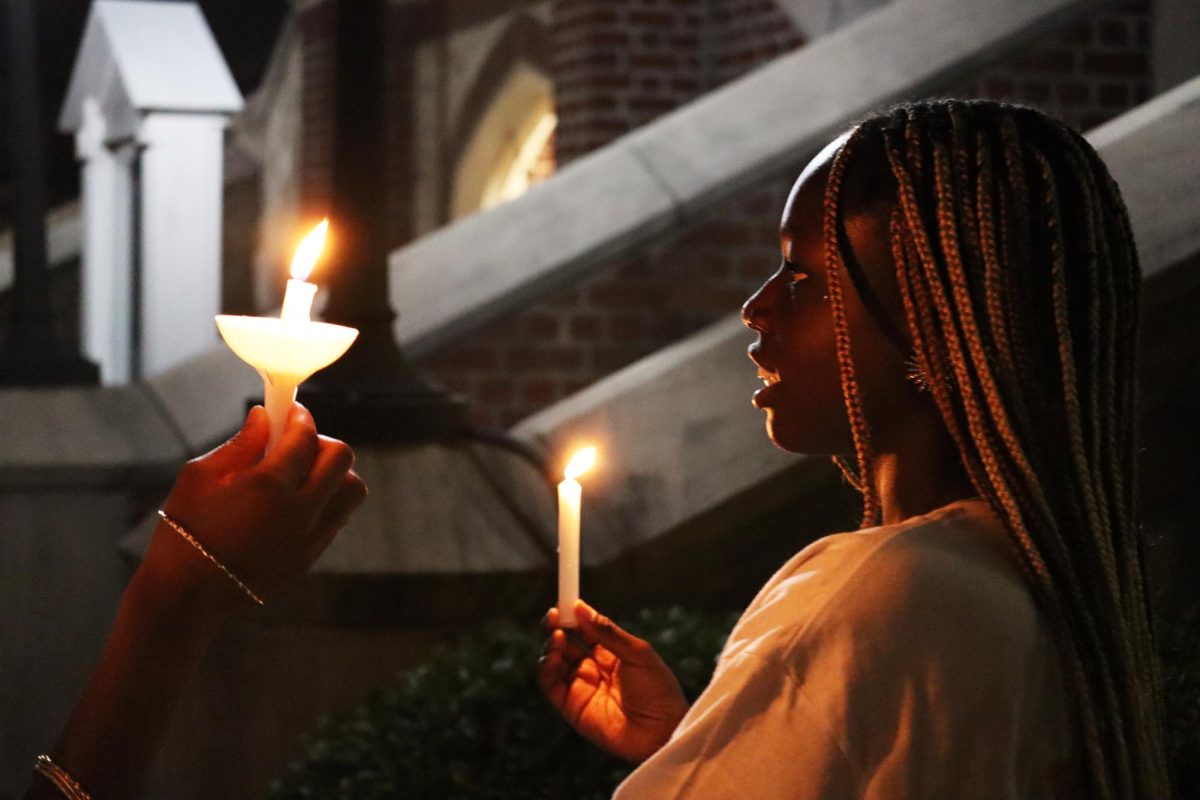If you’re looking to avoid the Freshman 15, eating on-campus meals won’t be helping much.
When you find yourself stumbling into the Orleans Room and shuffling in line for a heap of red beans and rice, how much do you know about what’s going onto your plate? Or rather, how much do you want to know?
Based on an assessment of an individual’s intake of food served at Loyola, eating at the OR will most likely cause many health consequences, according to Tulane University Nutritionist Danielle Paciera LDN, R.D.
The U.S. Department of Agriculture’s “My Pyramid Tracker,” a nutritional calculator available online, indicates high caloric, cholesterol and sodium content within a sample from Loyola’s Dining Services menu.
“With this standard American diet, the quality of life is declining because health awareness is failing,” Paciera said. “The USDA is calculating these nutrient levels based on information that is constantly growing, so there’s a double impact on our bodies, ultimately causing degeneration.”
The assessed food items, taken directly from OR menu on Sept. 11, included hash browns and one large scrambled egg for breakfast, a cheeseburger with french fries for lunch, two cups of red beans and rice, two cups of mixed salad greens with dressing, one small cornbread muffin and a two-inch square brownie for dinner.
Beverages calculated into the Tracker included 16 ounces of orange juice, two 22 ounce servings of Coca-Cola and 12 ounces of beer.
Alcohol was added as an additional factor in the assessment because of the rapid increase in college binge-drinking as surveyed by Harvard School of Public Health in their Core Alcohol and Drug Survey, which concluded that each college student consumes five drinks per week.
The survey indicates that binge-drinking – defined as five or more drinks for men, or four or more drinks for women per sitting – is prominent among more than 50 percent of students nation wide. Five beers alone measure well over 800 calories, enough to satisfy over one third of the recommended daily intake.
The overall caloric count of the selection from the OR menu was 2800 kilocalories, which exceeds the USDA-recommended range of 2200-2300, depending on physical activity. Cholesterol levels measured 510 milligrams, 200 milligrams more than the prescribed daily intake. Sodium measured a staggering 3800 milligrams, well over the USDA-accepted range of 1500-2000 milligrams daily.
The analysis, however, displayed an adequate amount of essential vitamins and minerals within the daily intake, but don’t think that the addition of Godfather’s Pizza is going to be a health benefit. Though Loyola provides healthier alternatives, including a stocked salad bar and several vegetarian menu options, many longitudinal health studies, including those conducted by Tufts and Cornell Universities, found that all-you-can-eat dining halls like Loyola’s dining service in the OR promote over-eating because of a university’s usually mandatory meal plans.
Studies from the Journal of American College Health say that the Freshman 15 can also be attributed to more independence in food choice and more opportunity for junk, as well as the first drop in metabolism at the end of adolescence. Late night or frequent snacking also contributes to the weight gain as a result of stress management, studies say.
Several attempts have been made to combat student obesity and prepare those in universities for a healthier lifestyle. In 2004, The National Academies’ Institute of Medicine called for a wide range of changes to be made in schools across America, including serving size adjustments and nutritional standards for brand name foods in universities. These attempts not only targeted the food served in cafeterias but also food served in on-campus convenience stores and coffee shops.
For instance, one personal pan pizza or a serving of bread sticks from the C-Store accounts for 90 percent of recommended daily caloric intake and exceeds sodium and fat intakes. Regulating these brands would offer healthier choices outside of what is offered on a meal plan. Author Robyn Flipse wrote a book in 2002 about the Freshman 15 phenomena, appropriately titled “Fighting the Freshman Fifteen.” Flipse presents a health guideline for freshman students to follow as well as a recipe section for cooking in a dorm room.
You might not get fat if you maintain some type of health regimen while dining on campus, but remember that the legendary Freshman 15 is not only limited to campus food choices. Most of those extra pounds come from unaccounted liquid calories and erratic eating, some common stressful-end-of-the-semester habits all too familiar to college students. All of these factors can dramatically alter our appetites and metabolism.
Late-night coffee or Red Bull only contributes to nutrient displacement, as do other soft drinks and alcohol, according to Paciera. The Tracker calculated almost identical assessments when several glasses of water were added to the daily intake, but when replacing the beer and Coke, the assessment shifted in a healthier direction.
Paciera suggests replacing every soft drink you drink daily with a glass of water in order to properly disperse good nutrients and flush out bad ones.
In a world full of preservatives and frozen meals, people generally feel “poor and willing to do less” when supplemented with lower standards for nutrition, Paciera said.
“We are made to eat chemicals,” Paciera said. “When you take care of yourself, the implications of a healthier quality of life are simple.”
Paciera suggests “healthy, fresh, and wholesome foods” including vegetables, whole grains, lean meats and foods with a high fiber content.
“Look at other options other than what’s available on campus,” Paciera advises. “There are healthy choices wherever you are.”
Alex Woodward can be reached at a [email protected].







